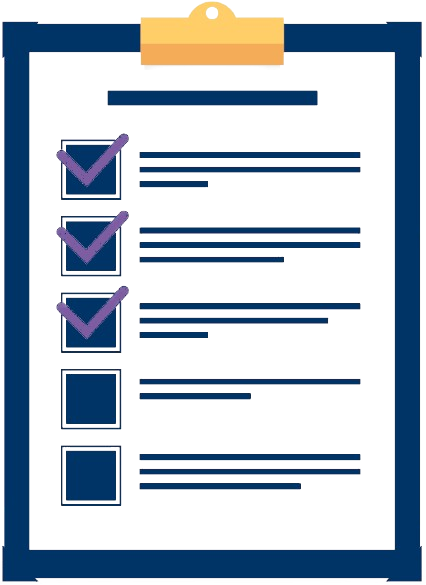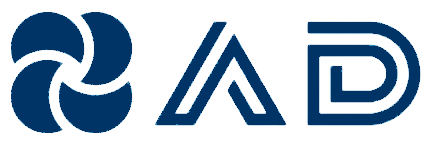Suggestions based on the Question and Answer that you are currently viewing
The accountant of Latifa Shoe Co. has compiled the following information from the company’s records as a basis for an income statement for the year ended December 31, 2014. Rent revenue $ 29,000 Interest expense 18,000 Market appreciation on land above cost 31,000 Salaries and wages expense (selling) 114,800 Supplies (selling) 17,600 Income tax 37,400 Salaries and wages expense (administrative) 135,90 5Other administrative expenses $ 51,700 Cost of goods sold 496,000 Net sales 980,000 Depreciation on plant assets (70% selling, 30% administrative) 65,000 Cash dividends declared 16,000 There were 20,000 shares of common stock outstanding during the year. Instructions (a) Prepare a multiple-step income statement. (b) Prepare a single-step income statement. (c) Which format do you prefer? Discuss.
Are there other points in the supply chain/production process where firms could make use of a better understanding of behavioural economics?
Why is biology so closely associated with nanoscience and nanotechnology?
1. To what extent can the following be regarded as common resources? (a) rain forests; (b) children’s playgrounds in public parks; (c) silence in a library; (d) the Internet. 2. Where would you place each of the following in Figure 12.8: (a) an inner city road at 3:00am; (b) an inner city road at 8:00am; (c) a toll motorway at 3:00am; (d) a toll motorway at 8:00am?
Nola, a tax novice, has a fairly simple tax question. Besides tax services, what are some sources that she can use to answer her question?
Explain how the Fed uses the ample reserves framework to reduce the money supply. (LO2)
Mike wanted to work for a CPA firm, but he also wanted to work on his parents’ farm in Montana. Because the CPA firm wanted Mike to be happy, it offered to let him work for the firm as an independent contractor during the fall and winter and return to Montana to work for his parents during the spring and summer. He was very excited to hear that the firm was also going to give him a 5 percent higher “salary” for the six months he would be working for the firm over what he would have made over the same six-month period if he worked full time as an employee (i.e., an increase from $30,000 to $31,500). Should Mike be excited about his 5 percent raise? Why or why not? What counteroffer could Mike reasonably suggest?
What are the potential benefits from developing an input-output chart of accounts?
Andrea Torbert purchased a computer for $8,000 on July 1, 2014. She intends to depreciate it over 4 years using the double-declining-balance method. Salvage value is $1,000. Compute depreciation for 2015.
How does behavioural economics differ from standard economics?
Seven samples of 5 parts each have been collected from an extrusion process that is in statistical control, and the diameter of the extrudate has been measured for each part. The calculated values of x for each sample are (inch) 1.002, 0.999, 0.995, 1.004, 0.996, 0.998, and 1.006. The values of R are (inch) 0.010, 0.011, 0.014, 0.020, 0.008, 0.013, and 0.017, respectively. (a) Determine the values of the center, LCL, and UCL for x and R charts. (b) Construct the control charts and plot the sample data on the charts.
Faith Battle operates a health food store, and she has been the only employee. Her business is growing, and she is considering hiring some additional staff to help her in the store. Explain to her the various payroll deductions that she will have to account for, including their potential impact on her financial statements, if she hires additional staff.
How should consolidated financial statements be reported this year when statements of individual companies were presented last year?
On June 30, 2014, Mischa Auer Company issued $4,000,000 face value of 13%, 20-year bonds at $4,300,920, a yield of 12%. Auer uses the effective-interest method to amortize bond premium or discount. The bonds pay semiannual interest on June 30 and December 31. Instructions (Round answers to the nearest cent.) (a) Prepare the journal entries to record the following transactions. (1) The issuance of the bonds on June 30, 2014. (2) The payment of interest and the amortization of the premium on December 31, 2014. (3) The payment of interest and the amortization of the premium on June 30, 2015. (4) The payment of interest and the amortization of the premium on December 31, 2015. (b) Show the proper balance sheet presentation for the liability for bonds payable on the December 31, 2015, balance sheet. (c) Provide the answers to the following questions. (1) What amount of interest expense is reported for 2015? (2) Will the bond interest expense reported in 2015 be the same as, greater than, or less than the amount that would be reported if the straight-line method of amortization were used? (3) Determine the total cost of borrowing over the life of the bond. (4) Will the total bond interest expense for the life of the bond be greater than, the same as, or less than the total interest expense if the straight-line method of amortization were used?
What is the basic accounting problem created by the monetary unit assumption when there is significant inflation? What appears to be the FASB position on a stable monetary unit?
Generally, a selling partner’s capital account carries over to the purchaser of the partnership interest. Under what circumstances will this not be the case?
State Hooke's law
If bond yields in Japan rise, how might U.S. bond yields be affected? Why? (LO3)
Of all of the current rapid prototyping technologies, which one is the most widely used?
The following information has been taken from the ledger accounts of Isaac Stern Corporation. Total income since incorporation $317,000 Total cash dividends paid 60,000 Total value of stock dividends distributed 30,000 Gains on treasury stock transactions 18,000 Unamortized discount on bonds payable 32,000 Instructions Determine the current balance of retained earnings.
What do bauxite and corundum have in common?
Microsoft is the leading developer of software in the world. To continue to be successful Microsoft must generate new products, which requires significant amounts of cash. The following is the current asset and current liability information from Microsoft’s current balance sheets (in millions). Following the Microsoft data is the current asset and current liability information from Oracle’s current balance sheets (in millions). Oracle is another major software developer. Part 1 (Cash and Cash Equivalents) Instructions (a) What is the definition of a cash equivalent? Give some examples of cash equivalents. How do cash equivalents differ from other types of short-term investments? (b) Calculate (1) the current ratio and (2) working capital for each company for 2011 and discuss your results. (c) Is it possible to have too many liquid assets? Part 2 (Accounts Receivable) Microsoft provided the following disclosure related to its accounts receivable. Instructions (a) Compute Microsoft’s accounts receivable turnover for 2011 and discuss your results. Microsoft had sales revenue of $69,943 million in 2011. (b) Reconstruct the summary journal entries for 2011 based on the information in the disclosure. (c) Briefly discuss how the accounting for bad debts affects the analysis in Part 2 (a).
An economy is currently in equilibrium. The following figures refer to elements in its national income accounts. £ billions Consumption (total) 60 Investment 5 Government expenditure 8 Imports 10 Exports 7 (a) What is the current equilibrium level of national income? (b) What is the level of injections? (c) What is the level of withdrawals? (d) Assuming that tax revenues are £7 billion, how much is the level of saving? (e) If national income now rose to £80 billion and, as a result, the consumption of domestically produced goods rose to £58 billion, what is the mpcd? (f) What is the value of the multiplier? (g) Given an initial level of national income of £80 billion, now assume that spending on exports rises by £4 billion, spending on investment rises by £1 billion, whilst government expenditure falls by £2 billion. By how much will national income change? (h) Given this new level of national income, assume that full employment is achieved at a national income of £100. Is there an inflationary or a deflationary gap? (i) What is the size of this gap?
Which members of a family are included in the family attribution rules? Is there any rationale for the family members included in the test?
Determine the helix angle A such that the screw pitch p is equal to the screw diameter D. This is called the \"square\" angle in plastics extrusion - the angle that provides a flight advance equal to one diameter for each rotation of the screw.
The benefits of buying with AnswerDone:

Access to High-Quality Documents
Our platform features a wide range of meticulously curated documents, from solved assignments and research papers to detailed study guides. Each document is reviewed to ensure it meets our high standards, giving you access to reliable and high-quality resources.

Easy and Secure Transactions
We prioritize your security. Our platform uses advanced encryption technology to protect your personal and financial information. Buying with AnswerDone means you can make transactions with confidence, knowing that your data is secure

Instant Access
Once you make a purchase, you’ll have immediate access to your documents. No waiting periods or delays—just instant delivery of the resources you need to succeed.
